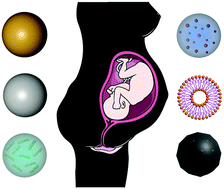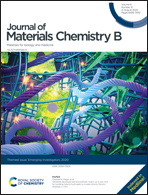Design of nanomaterials for applications in maternal/fetal medicine
Abstract
Pregnancy complications are commonplace and the challenges of treatment during pregnancy with few options available pose a risk to the health of both the mother and baby. Patients suffering from conditions such as preeclampsia, placenta accreta, and intrauterine growth restriction have few treatment options apart from emergency caesarean section. Fortunately, researchers are beginning to develop nanomedicine-based therapies that could be utilized to treat conditions affecting the mother, placenta, or fetus to improve the prognosis for mothers and their unborn children. This review summarizes the field's current understanding of nanoparticle biodistribution and therapeutic effect following systemic or vaginal administration and overviews the design parameters researchers should consider when developing nanomedicines for maternal/fetal health. It also describes safety considerations for nanomedicines to limit undesirable maternal or fetal side effects and discusses future work that should be performed to advance nanomedicine for maternal/fetal health. With additional development and implementation, the application of nanomedicine to treat pregnancy complications may mitigate the need for emergency caesarean sections and allow pregnancies to extend to term.

- This article is part of the themed collection: Journal of Materials Chemistry B Emerging Investigators


 Please wait while we load your content...
Please wait while we load your content...